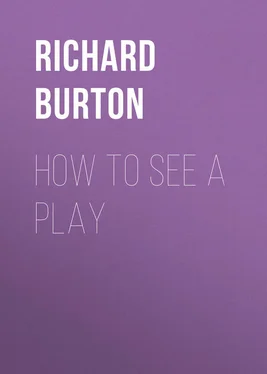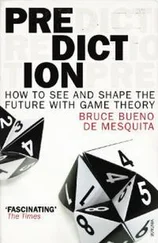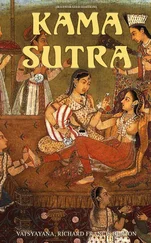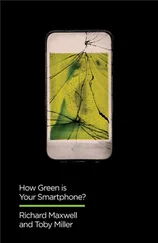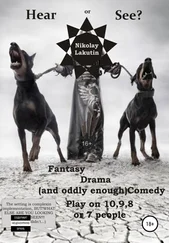Richard Burton - How to See a Play
Здесь есть возможность читать онлайн «Richard Burton - How to See a Play» — ознакомительный отрывок электронной книги совершенно бесплатно, а после прочтения отрывка купить полную версию. В некоторых случаях можно слушать аудио, скачать через торрент в формате fb2 и присутствует краткое содержание. ISBN: , Жанр: foreign_antique, foreign_prose, foreign_dramaturgy, на английском языке. Описание произведения, (предисловие) а так же отзывы посетителей доступны на портале библиотеки ЛибКат.
- Название:How to See a Play
- Автор:
- Жанр:
- Год:неизвестен
- ISBN:http://www.gutenberg.org/ebooks/32433
- Рейтинг книги:5 / 5. Голосов: 1
-
Избранное:Добавить в избранное
- Отзывы:
-
Ваша оценка:
- 100
- 1
- 2
- 3
- 4
- 5
How to See a Play: краткое содержание, описание и аннотация
Предлагаем к чтению аннотацию, описание, краткое содержание или предисловие (зависит от того, что написал сам автор книги «How to See a Play»). Если вы не нашли необходимую информацию о книге — напишите в комментариях, мы постараемся отыскать её.
How to See a Play — читать онлайн ознакомительный отрывок
Ниже представлен текст книги, разбитый по страницам. Система сохранения места последней прочитанной страницы, позволяет с удобством читать онлайн бесплатно книгу «How to See a Play», без необходимости каждый раз заново искать на чём Вы остановились. Поставьте закладку, и сможете в любой момент перейти на страницу, на которой закончили чтение.
Интервал:
Закладка:
Nor will the trained observer in the theater be cheated by the dollar mark in his theatrical entertainment. He will come to feel that an adequate stock company, playing the best plays of the day, may afford him more of drama culture for an expenditure of fifty cents for an excellent seat than will some second-rate traveling company which presents a drama that is a little more recent but far less worthy, to see which the charge is three or four times that modest sum. All over the land to-day nominally cultivated folk will turn scornfully away from a fifty-cent show, as they call it, only because it is cheap in the literal sense, whereas the high-priced offering is cheap in every other sense but the cost of the seat. Such people overlook the nature of the play presented, the playwright's reputation, and the quality of the performance; incapable of judging by the real tests, they stand confessed as vulgarians and ignoramuses of art. We shall not have intelligent audiences in American theaters, speaking by and large, until theater-goers learn to judge dramatic wares by some other test than what it costs to buy them. Such a test is a crude one, in art, however infallible it may be in purely material commodities; indeed, is it not the wise worldling in other fields who becomes aware in his general bartering that it is unsafe to estimate his purchase exclusively by the price tag?
To one who in this way makes the effort to inform himself with regard to the things of the theater – plays, players and playwrights – concerning dramatic history both as it appertains to the drama and the theater; and concerning the intellectual as well as esthetical and human values of the theater-going experience, it will soon become apparent that it offers him cultural opportunity that is rich, wide and of ever deepening enjoyment. And taking advantage of it, he will dignify one of the most appealing pleasures of civilization by making it a part of his permanent equipment for satisfactory living.
Other aspects of this thought may now be expounded, beginning with a review of the play in its history; some knowledge of which is obviously an element in the complete appreciation of a theater evening. For the proper viewing of a given play one should have reviewed plays in general, as they constitute the body of a worthy dramatic literature.
CHAPTER III
UP TO SHAKESPEARE
THErecent vogue of plays like The Servant in the House , The Passing of the Third Floor Back , The Dawn of To-morrow , and Everywoman sends the mind back to the early history of English drama and is full of instruction. Such drama is a reversion to type, it suggests the origin of all drama in religion. It raises the interesting question whether the blasé modern theater world will not respond, even as did the primitive audiences of the middle ages, to plays of spiritual appeal, even of distinct didactic purpose. And the suggestion is strengthened when the popularity is recalled of the morality play of Everyman a few years since, that being a revival of a typical mediæval drama of the kind. It almost looks as if we had failed to take into account the ready response of modern men and women to the higher motives on the stage; have failed to credit the substratum of seriousness in that chance collection of human beings which constitutes a theater audience. After all, they are very much like children, when under the influence of mob psychology; sensitive, plastic to the lofty and noble as they are to the baser suggestions that come to them across the footlights. In any case, these late experiences, which came by way of surprise to the professional purveyors of theatrical entertainment, give added emphasis to the statement that the stage is the child of mother church, and that the origin of drama in the countries whereof we have record is always religious. The mediæval beginnings in Europe and England have been described in their details by many scholars. Suffice it here to say that the play's birthplace is at the altar end of the cathedral, an extension of the regular service. The actors were priests, the audience the vast hushed throngs moved upon by incense, lights, music, and the intoned sacred words, and, for the touch of the dramatic which was to be the seed of a wonderful development, we may add some portion of the sacred story acted out by the stoled players and envisaged in the scenic pomp of the place. The lesson of the holy day was thus brought home to the multitude as it never would have been by the mere recital of the Latin words; scene and action lent their persuasive power to the natural associations of the church. Such is the source of modern drama; what was in the course of time to become "mere amusement," in the foolish phrase, began as worship; and if we go far back into the Orient, or to the south-lying lands on the Mediterranean, we find in India and Greece alike this union of art and worship, whether the play began within church or temple or before Dionysian altars reared upon the green sward. The good and the beautiful, the esthetic and the spiritual, ever intertwined in the story of primitive culture.
And the gradual growth from this mediæval beginning is clear. First, a scenic elaboration of part of the service, centering in some portion of the life and death of Christ; then, as the scenic side grew more complex, a removal to the grounds outside the cathedral; an extension of the subject-matter to include a reverent treatment of other portions of the Bible narrative; next, the taking over of biblical drama by the guilds, or crafts, under the auspices of the patron saints of the various organizations, as when, on Corpus Christi day, one of the great saints' days of the year, a cycle of plays was presented in a town with the populace agog to witness it, and the movable vans followed each other at the street corners, presenting scene after scene of the story. Then a further extension of motives which admitted the use of the lives of the saints who presided over the guilds; and finally the further enlargement of theme due to the writing of drama of which the personages were abstract moral qualities, giving the name of Morality to this kind of play. Such, described with utter simplicity and brevity, was the interesting evolution.
Aside from all technicalities, and stripped of much of moment to the specialist, we have in this origin and early development a blend of amusement and instruction; a religious purpose linked with a frank recognition of the fact that if you make worship attractive you strengthen its hold upon mankind – a truth sadly lost sight of by the later Puritans. The church was wise, indeed, to unite these elements of life, to seize upon the psychology of the show and to use it for the purpose of saving souls. It was not until the sixteenth century and the immediate predecessors of Shakespeare that the play, under the influence of renaissance culture and the inevitable secularization of the theater in antagonism to the Puritan view of amusement, waxed worldly, and little by little lost the ear-marks of its holy birth and upbringing.
The day when the priests, still the actors of the play, walked down the nave and issued from the great western door of the cathedral, to continue the dramatic representations under the open sky, was truly a memorable one in dramatic history. The first instinct was not that of secularization, but rather the desire for freer opportunity to enact the sacred stories; a larger stage, more scope for dramatic action. Yet, although for generations the play remained religious in subject-matter and intent, it was inevitable that in time it should come to realize that its function was to body forth human life, unbounded by Bible themes: all that can happen to human beings on earth and between heaven and hell and beyond them, being fit material for treatment, since all the world's a stage, and flesh and blood of more vital interest to humanity at large than aught else. The rapid humanization of the religious material can be easily traced in the coarse satire and broad humor introduced into the Bible narratives: a free and easy handling of sacred scene and character natural to a more naïve time and by no means implying irreverence. Thus, in the Noah story, Mrs. Noah becomes a stout shrew whose unwillingness to come in out of the wet and bestow herself in dry quarters in the Ark must have been hugely enjoyed by the fifteenth century populace. And the Vice of the morality play degenerates into the clown of the performance, while even the Devil himself is made a cause for laughter.
Читать дальшеИнтервал:
Закладка:
Похожие книги на «How to See a Play»
Представляем Вашему вниманию похожие книги на «How to See a Play» списком для выбора. Мы отобрали схожую по названию и смыслу литературу в надежде предоставить читателям больше вариантов отыскать новые, интересные, ещё непрочитанные произведения.
Обсуждение, отзывы о книге «How to See a Play» и просто собственные мнения читателей. Оставьте ваши комментарии, напишите, что Вы думаете о произведении, его смысле или главных героях. Укажите что конкретно понравилось, а что нет, и почему Вы так считаете.
